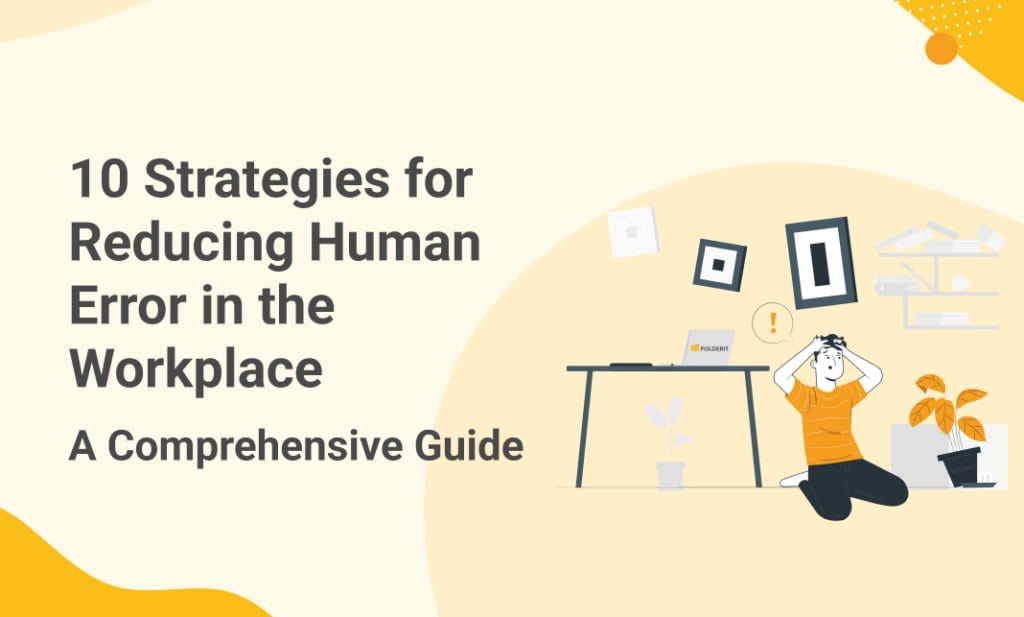In the dynamic environment of the modern workplace, human error is an inevitable occurrence. These errors, ranging from minor oversights to significant blunders, can have far-reaching consequences including financial losses, reputational damage, and even safety hazards.
Therefore, it becomes imperative for organizations to adopt strategies that can minimize the occurrence of human errors and foster a culture of efficiency and safety.
Understanding Human Error
Before we embark on the journey to reduce human errors, it is essential to understand what constitutes human error and what are its common causes in the workplace. Human error refers to the mistakes made by employees during the execution of tasks.
These errors can be classified into different categories such as slips, lapses, and mistakes, each having distinct characteristics and causes. The common causes of human error in the workplace include lack of training, inadequate resources, poor work environment, and psychological stress.
Strategies to Reduce Human Error
Implementing strategies to reduce human error can lead to a more efficient, safe, and productive workplace. Here, we outline several strategies that can be instrumental in minimizing human errors:
1. Enhancing Employee Training and Education
Comprehensive Training Programs: Develop training programs that are comprehensive and cater to the specific needs of different job roles. Ensure that employees are well-versed with the procedures and protocols of their respective tasks.
Continuous Learning: Encourage employees to engage in continuous learning through workshops, seminars, and online courses. This will help in keeping them updated with the latest developments in their field.
2. Implementing Robust Procedures and Protocols
Clear Guidelines: Establish clear and concise guidelines for various tasks to prevent errors due to ambiguity or confusion.
Standard Operating Procedures (SOPs): Develop SOPs that outline the step-by-step process to be followed for different tasks. This will help in reducing errors arising from deviations from the established procedures.
3. Leveraging Technology to Minimize Error
Automation: Introduce automation in repetitive and monotonous tasks to reduce the chances of human error.
Advanced Tools and Software: Utilize advanced tools and software that can assist employees in performing their tasks with higher accuracy and efficiency.
4. Creating a Supportive Work Environment
Ergonomic Design: Design the workplace in a manner that reduces physical strain and discomfort, thereby minimizing errors caused by fatigue.
Positive Work Culture: Foster a positive work culture where employees feel valued and motivated to perform their best.
5. Encouraging Open Communication
Feedback Channels: Establish channels where employees can freely communicate their concerns, suggestions, or report errors without fear of retribution. This fosters a culture of openness and continuous improvement.
Collaborative Problem-Solving: Encourage teams to collaborate and brainstorm solutions to complex problems, reducing the likelihood of errors that can occur when individuals work in isolation.
6. Implementing Regular Monitoring and Evaluation
Performance Metrics: Develop performance metrics to regularly monitor and evaluate the effectiveness of various processes and identify areas where errors are more likely to occur.
Root Cause Analysis: In case of an error, conduct a root cause analysis to identify the underlying causes and implement corrective actions to prevent recurrence.
7. Promoting Mental and Physical Well-being
Work-Life Balance: Encourage employees to maintain a healthy work-life balance to prevent burnout and errors arising from fatigue and stress.
Wellness Programs: Implement wellness programs that focus on the mental and physical well-being of employees, helping them to stay focused and alert during work hours.
8. Developing a Culture of Accountability
Responsibility and Ownership: Foster a culture where employees take responsibility for their actions and have a sense of ownership towards their tasks.
Learning from Mistakes: Encourage employees to learn from their mistakes and use them as opportunities for growth and development, rather than punishing them.
9. Continuous Improvement
Process Optimization: Continuously review and optimize processes to eliminate inefficiencies and reduce the likelihood of errors.
Innovation: Encourage employees to come up with innovative solutions to existing problems, fostering a culture of continuous improvement and error reduction.
10. Leveraging Expertise
Consulting Experts: Consult with experts in the field to gain insights into best practices and strategies for reducing human error.
Collaboration with Industry Peers: Collaborate with industry peers to learn from their experiences and implement proven strategies in your organization.
Integrating Strategies with Folderit
When it comes to implementing these strategies, a robust document management system like Folderit can play a pivotal role. Folderit facilitates seamless communication, document sharing, and collaboration, helping in reducing errors arising from miscommunication or loss of critical information. Moreover, the advanced tagging and sharing features of Folderit allow for organized and streamlined access to resources, further minimizing the chances of errors.
Building a Resilient Workplace
In the quest to build a resilient workplace, reducing human error stands as a cornerstone. By adopting these strategies, organizations can foster a culture of efficiency, safety, and productivity. Remember, the journey to reducing human error is a continuous one, marked by learning, adaptation, and growth. With the right approach and tools like Folderit at your disposal, you can transform your workplace into a hub of excellence, where errors are not feared but are seen as opportunities for improvement and innovation.



